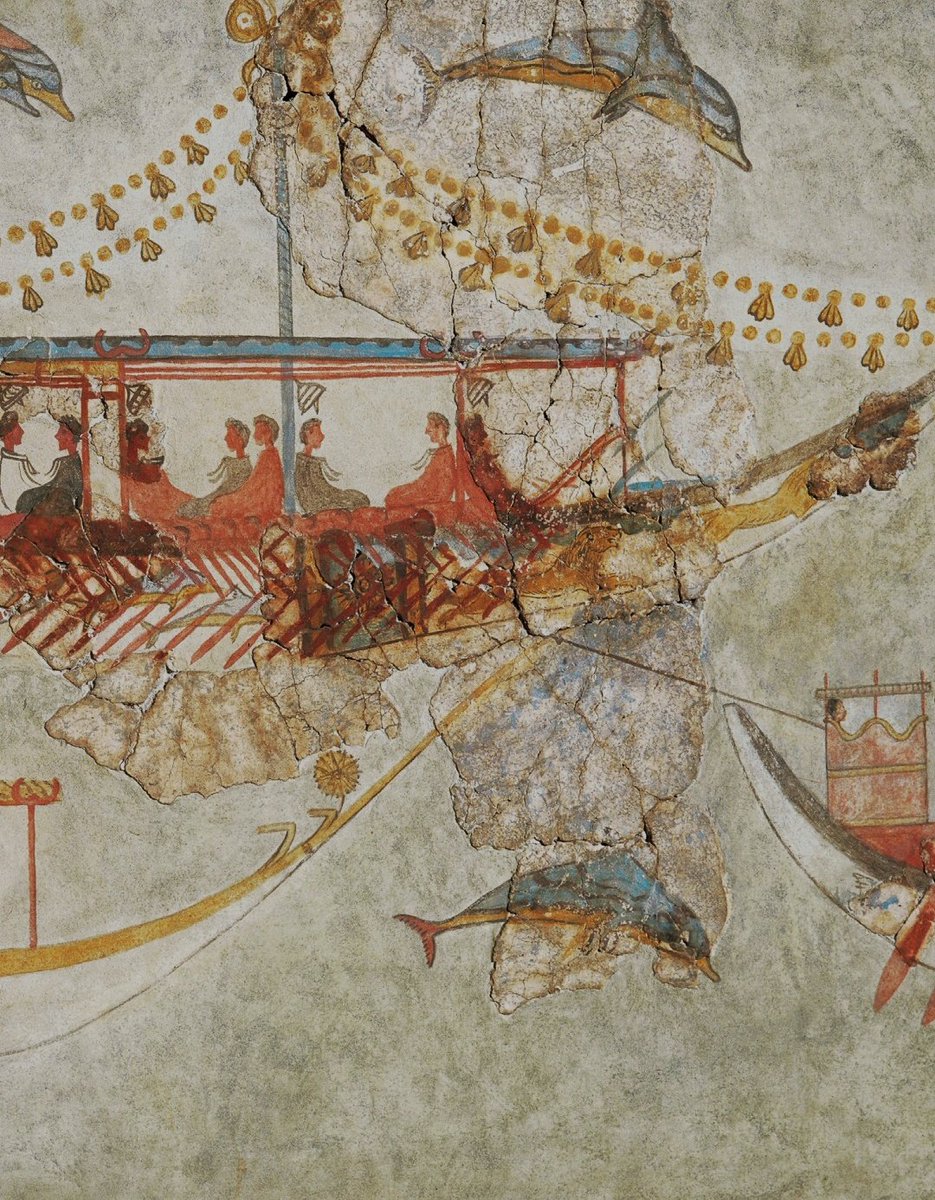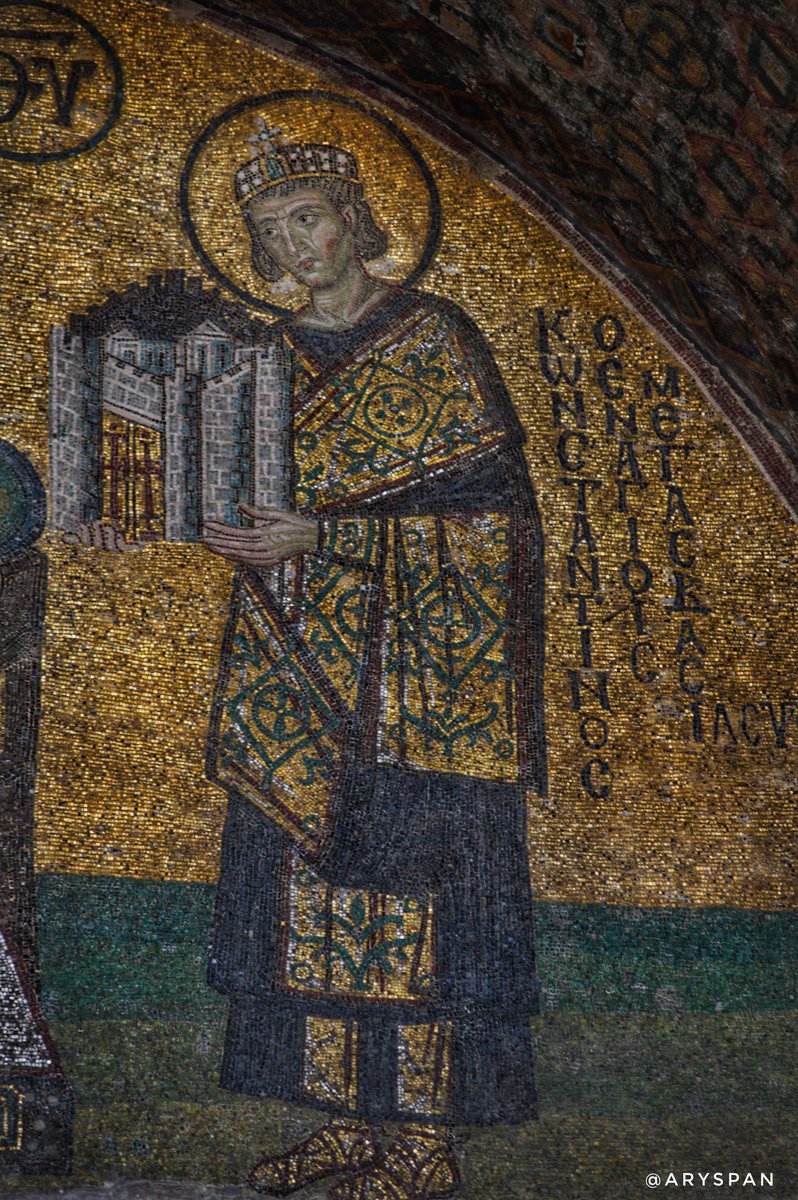
#BronzeAge frescoes from Knossos, Thera (Santorini) and Mycenae✨
17th - 13th century BCE
#Archaeology
17th - 13th century BCE
#Archaeology

1/ Detail of the fresco "Saffron Gatherers", 1650 BCE
Akrotiri was a settlement of the Cycladic culture that came under the influence of the Minoans. It was destroyed in the Theran eruption around the 16th century BCE and buried in volcanic ash.
©Museum of Prehistoric Thera
Akrotiri was a settlement of the Cycladic culture that came under the influence of the Minoans. It was destroyed in the Theran eruption around the 16th century BCE and buried in volcanic ash.
©Museum of Prehistoric Thera

50 times more powerful than the eruption of Vesuvius, the eruption of Thera was one of the largest volcanic events in human history, resulting in earthquakes, tsunamis and a volcanic winter.
©Modern reconstruction of the "Saffron Goddess" fresco, a griffin stand guard. 1650 BCE
©Modern reconstruction of the "Saffron Goddess" fresco, a griffin stand guard. 1650 BCE

3/ The eruption devastated the surrounding coastal areas, triggering the downfall of the Minoans while for some scholars its also linked with the Xia dynasty collapse in China (Bamboo Annals) and the turmoil in Pharaonic Egypt (Bible, Exodus).
armstronginstitute.org/798-thera-erup…
armstronginstitute.org/798-thera-erup…

4/ The Minoans of Crete with their vast trading network around the Mediterranean and highly urbanized, were one of the most important civilizations of the #BronzeAge. 3500-1100 BCE
©Fresco from Knossos, known as "La Parissiene", 1450-1300 BCE
Archaeological Museum, Heraklion
©Fresco from Knossos, known as "La Parissiene", 1450-1300 BCE
Archaeological Museum, Heraklion

5/ With the Minoan decline, the Mycenaeans from the mainland took over Crete and the islands, replacing the Minoans as the major power of the Aegean. 1750-1050BCE
Fresco of the so called "Mycenaean Lady" from the Acropolis of Mycenae. 13th c. BCE.
©National Archaeological Museum
Fresco of the so called "Mycenaean Lady" from the Acropolis of Mycenae. 13th c. BCE.
©National Archaeological Museum

• • •
Missing some Tweet in this thread? You can try to
force a refresh























